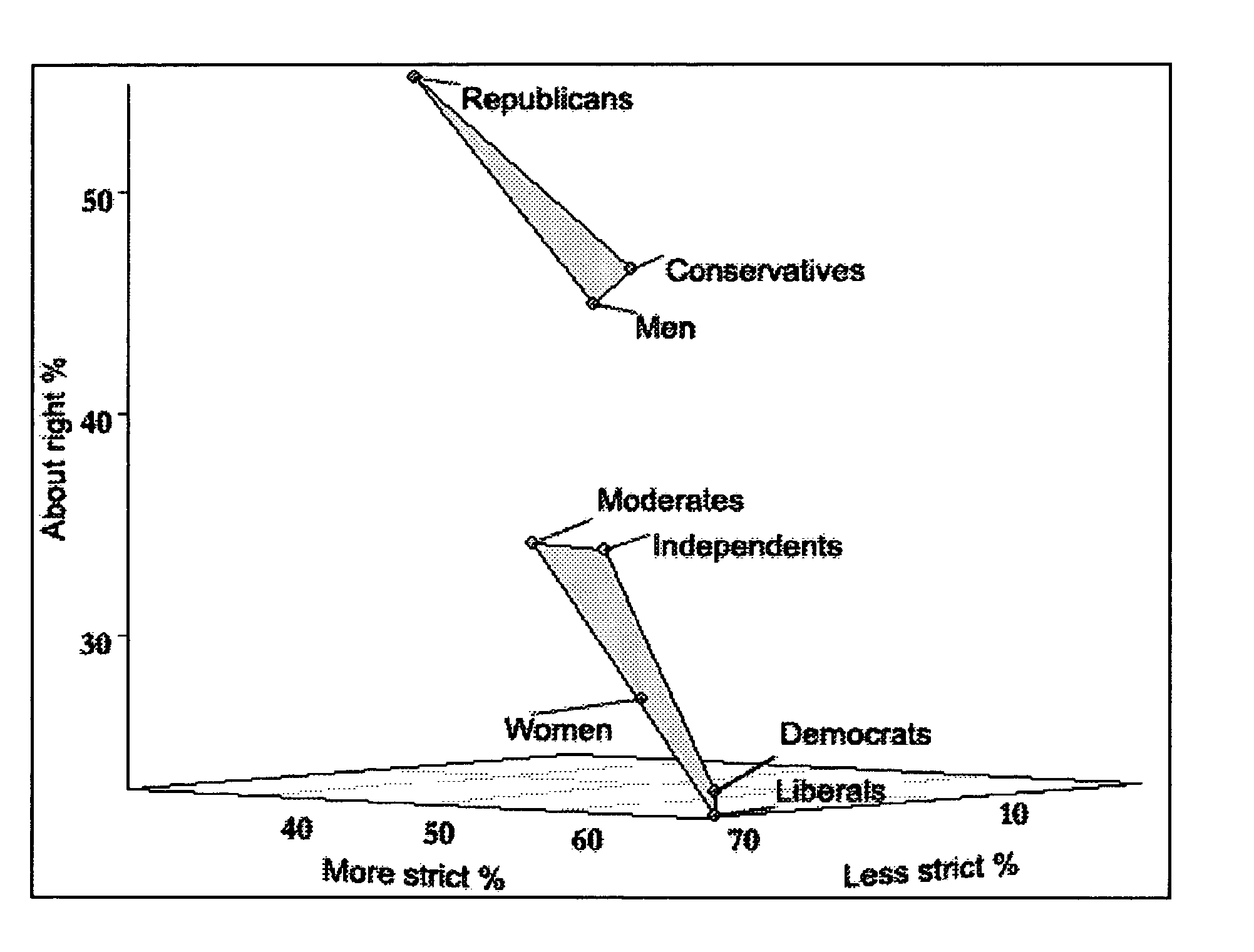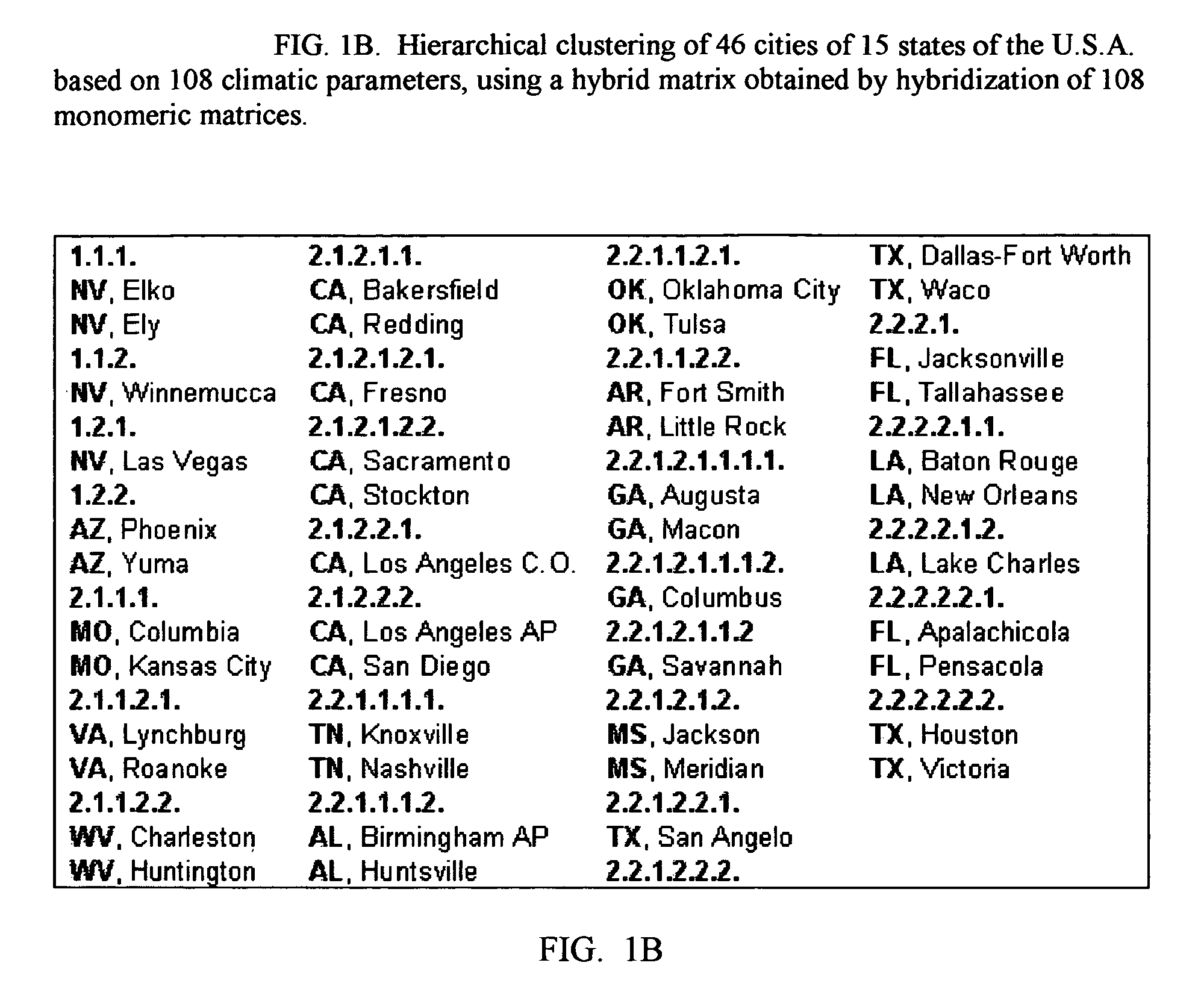High-dimensional data clustering with the use of hybrid similarity matrices
a hybrid similarity and data technology, applied in the field of data processing, can solve the problems of inability to develop routine technology for establishing similarities and dissimilarities in unsupervised mode, and inability to fully automate unsupervised mode, etc., to achieve the effect of eliminating the negative effect of the “curse of dimensionality”
- Summary
- Abstract
- Description
- Claims
- Application Information
AI Technical Summary
Benefits of technology
Problems solved by technology
Method used
Image
Examples
Embodiment Construction
The specification of the present invention consists of three consecutive and interrelated sections: (1) the method for hybridization of similarity matrices computed based on individual variables that provides for a compact description of high dimensionality and eliminates the possibility of response distortion which happens when values of attributes are described in different measurement units; (2) description of the metrics, developed as part of this invention, that ensure the most adequate reflection of specifics of attributes and thus make the application of hybridized matrices most efficient; and (3) description of techniques, developed as part of this invention, that ensure the optimal use of the aforementioned techniques and procedures.
The method and techniques proposed by this invention are designed for the use in combination with the method for evolutionary transformation of similarity matrices (ETSM) (the invention specified in patent application Ser. No. 09 / 655,519 by L...
PUM
 Login to View More
Login to View More Abstract
Description
Claims
Application Information
 Login to View More
Login to View More - R&D
- Intellectual Property
- Life Sciences
- Materials
- Tech Scout
- Unparalleled Data Quality
- Higher Quality Content
- 60% Fewer Hallucinations
Browse by: Latest US Patents, China's latest patents, Technical Efficacy Thesaurus, Application Domain, Technology Topic, Popular Technical Reports.
© 2025 PatSnap. All rights reserved.Legal|Privacy policy|Modern Slavery Act Transparency Statement|Sitemap|About US| Contact US: help@patsnap.com



